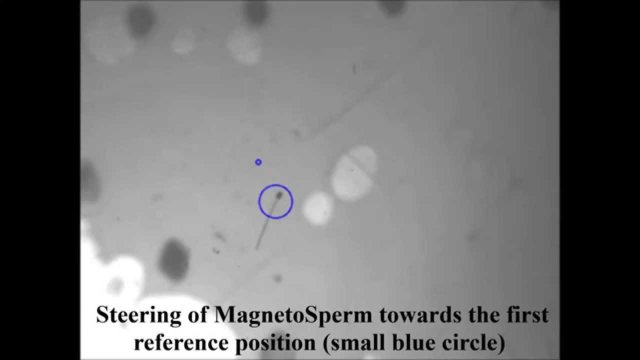Researchers at the University of Twente have developed microrobots which resemble swimming sperm cells when they move. The design of this 'MagnetoSperm' has a head of metal and a flexible body which is about six times larger than that of a human sperm. The artificial semen can be employed to administer medicine and may be used during in vitro fertilization.
Sarthak Misra of the University of Twente department of Robotics and Mechatronics and MIRA-Institute for Biomedical Technology and Technical Medcine published the research in the scientific journal Applied Physics Letters. Using a magnetic field no stronger than a fridge magnet, the team made the robot 'swim' towards a fixed point.
Controlled movement
"We have built a biologically inspired microrobot that looks like a sperm cell but has been completely fabricated in the lab," Misra says. "The magnetic head contains a two-hundred nanometre thick layer of cobalt-nickel. The layer enables the magnet to move back and forth in an oscillating weak magnetic field, causing an oscillating movement."
Misra and his team demonstrated that the microrobots swim forward and that their movement can be steered, which in turn allows for the targeted release of drugs.. They can also be used in IVF treatments, another procedure where precise locations have to be reached. Misra is going to conduct more experiments in order to make the MagnetoSperm even smaller and faster, and precisely control a swarm of MagnetoSperms.
In the video below, the cells move at a speed of one millimeter in twenty seconds.
The response from the scientific world has been promising and overwhelming. The work has been highlighted in several media outlets both in the Netherlands (e.g., De Volkskrant) and abroad (e.g, BBC News , Los Angeles Times , American Institute of Physics, among several others).






